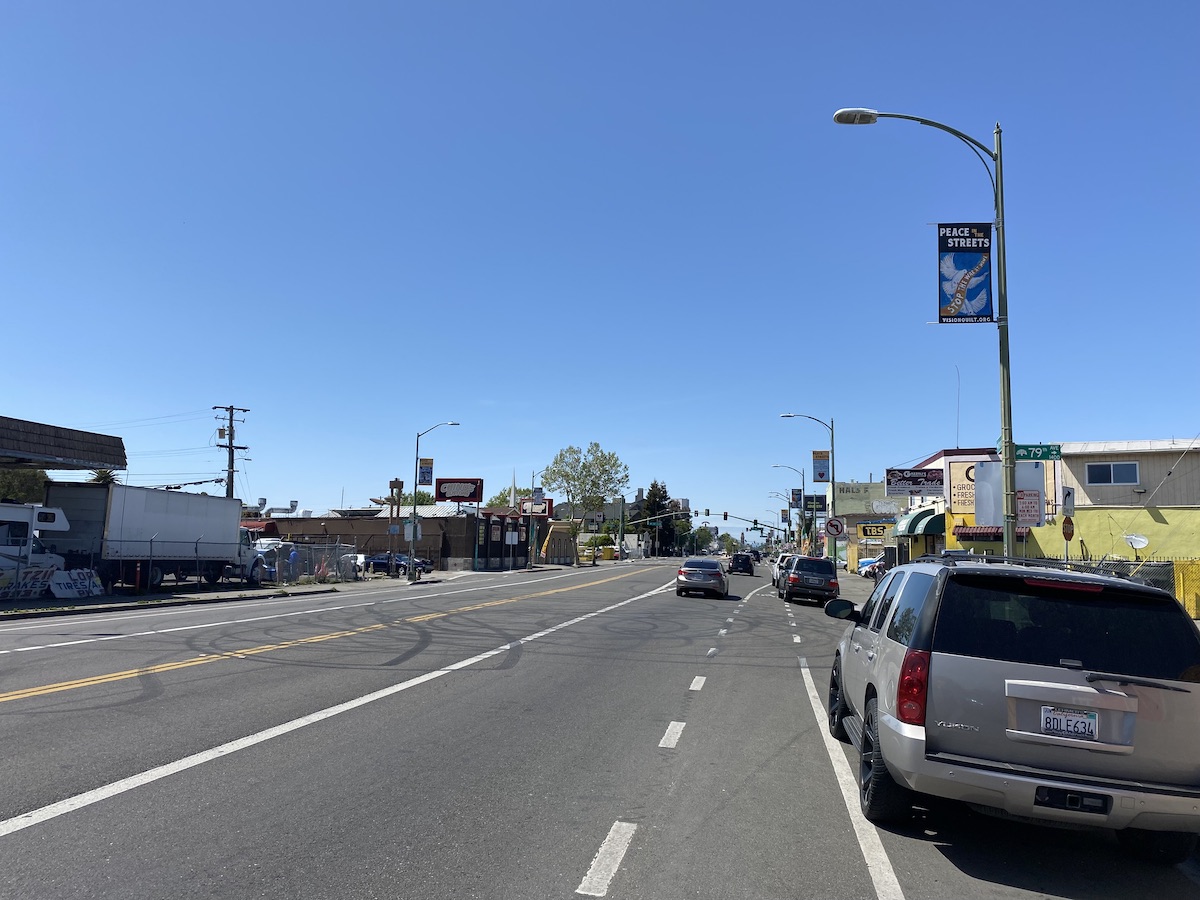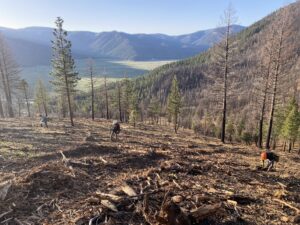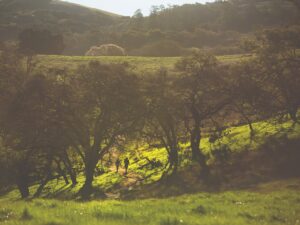On Monday, City of Oakland Public Works released a draft Urban Forest Plan—the first significant investment in Oakland’s urban forest since 2008. The 173-page document, now open for public comment through to December 8, outlines multiple strategies for maintaining and growing Oakland’s urban canopy, from pruning and removing existing trees to planting new ones.
Oakland’s urban forest—some 68,180 trees ranging from coast live oaks in public parks, streetside London planes, and even the fruit trees growing outside resident homes and businesses—has been in decline since 2014, with about 277 acres less now than it had then.
The plan, which will be voted on by the City Council after it is finalized next year, denotes different scenarios: a city-led scenario with an estimated $21 million in maintenance, or a $17 million alternative that relies on a mix of contractors and city workers. It also outlines different levels of planning strategies—including the option to plant nothing, and watch the tree canopy recede by 2.9 percent by 2034.
For Gordon Matassa, an urban forestry project coordinator who lives and works in Oakland, putting together the plan was the culmination of five years of work under a grant from Cal Fire—it included surveying all of Oakland’s canopy, planting 700 new trees, and engaging with the community to draft the 50-year plan.
“I’m hoping things move forward because I’m ready to hit the ground running, to get working on it once it gets approved,” he says.
The draft plan states the city has so far had a “reactive approach” to its urban forest—in practice, there has been no functional tree service apart from emergency removal since 2008.
Budget cuts spurred by the recession in 2009 led to the termination of half the city’s Tree Services Division staff (from 40 to just 15) and axing, so to speak, all other tree services. Even now, Matassa says there is nobody from public works to call if you need trees planted, pruned, or removed—unless it’s an emergency. “We’re just not able to provide that service.”

This story is part of Wild Billions, a Bay Nature project exploring the impact of big federal money on Bay Area nature.
More on urban trees in this series:
- Oakland’s Urban Tree Dreams Get (Partially) Funded
- As Cities Heat Up, USDA Grants $42 Million for Urban Trees Around the Bay
In the process of developing the draft, a team of arborists surveyed the entirety of Oakland to develop a tree inventory and flagged about 9 out of 10 trees as overdue for a snip or ripe for removal. That backlog of deferred maintenance, Matassa says, is part of the reason why the plan’s proposed budget is so high.
“We haven’t done any tree maintenance in over 15 years. So the initial maintenance that does happen is going to be more expensive and require more work,” Matassa says. The hope is that the cost goes down as the years go by.
Since pruning and maintenance has fallen to the private sector and nonprofits, disadvantaged communities will likely need their canopy woes dealt with first. The plan places an emphasis on equity, and once “grid pruning,” or a systematic block-by-block maintenance program, is underway, Matassa says disadvantaged communities will be the first to see the benefits.
For him, the goal is “canopy equity”—right now, Oakland has, overall, a 21 percent canopy cover. But some places in the Oakland Hills have nearly half of their urban spaces greened, while other census tracts show a 6 percent coverage. “Our goal is to get everyone up to 21 percent,” Matassa says.



“I’m hoping that my daughter—if she still lives in Oakland—will get to see, ‘Oh the wood in East Oakland is just like the wood in [Oakland] Hills,’” Matassa says.
Funding, for whichever option prevails, is not guaranteed. Instead, even after approval, it’s likely that public works officials will need to apply for grants or pull from the city’s budget to make it happen.
The task is tall (like, coast live oak tall), but things are moving in the right direction, and Matassa is hopeful. As a part of the Inflation Reduction Act’s investment into urban forests, the City of Oakland received an $8 million grant from the U.S. Forest Service that will fund maintenance, planting, and community engagement. Though the grant money is a mere fraction of the $22.5 million that the city had originally applied for, Matassa says it’s a part of a trend in increased funding that he has observed more generally. In the past few months, Matassa’s team gained a new grant writer focused solely on applying for public works-related funding.
Ideally, Matassa says all cities would follow the example of San Francisco, which in 2016 passed Proposition E, agreeing to set aside about $19 million annually for tree and sidewalk maintenance and planting.
But as someone who has been in the urban forestry industry for over ten years, Matassa knows how long it can take for a tree—literal or metaphorical—to grow. “There’s so much opportunity, especially in places like Oakland, where this could be turned around,” he says. “And I’m hoping that this plan can light that fire to make that happen.”
The draft document is available for public comment on the City of Oakland’s website.
Update, Nov. 1: This story has been updated to clarify that the $17 million plan would use both city workers and contracts. It was also clarified that City of Oakland provides tree removal as a part of emergency services.




